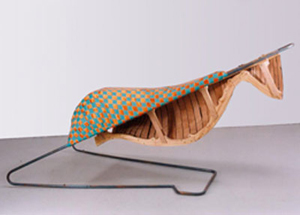Drawing is as natural and cunning as the memory, it flows, confident in its ability to simulate an image – absurd and two-dimensional as it may be. It infiltrates like a constant presence at the back of my consciousness and emerges across the page or any surface next to me and weaves its wondrous deception. In the same way, memory always offers us an identity and a seemingly continuous life story, convincing us that our past is trailing behind us as one trail that has no breaks or splits, no patches or seams.
But beneath the pseudo-solid surface lies the fabrication of the act of recollection – a story we tell ourselves that varies from version to version; a kind of chimera disorderly consisting of parts of different creatures whose fusion involves effort, and the seams are conspicuous if only looked at. The effort involved in the transition from drawing to sculpture parallels the effort of examining the memory properly and making a sort of taxonomy of its incompatible organs. The drawing born under my hand almost inadvertently raises the question of what are the hidden sides? What latent scaffolding are required to maintain the visual as it appears? What secret life is swarming behind the back of an image that has no back but only a face?
Deciphering these questions is through sculpture. The transition toward sculpture leads me to create entities with an anatomy of memory – fictional figures that are the result of the fusion of shapes, materials, textures and associations. Sometimes this fusion is expressed in practice in a multiplicity of material means and sometimes (as in some castings) in material transformations that combine in one sculptural piece an image, texture and material from different sources.
The memories themselves, and especially the childhood memories, play an important role in shaping the images, in choosing the materials and outlining the associative contexts used in the sculptures. However, this is not about recreating memories or images from childhood. For me, the act of remembrance is more important than the memories themselves, and especially important is the remembrance of observation – observing objects, materials, textures and spaces – and the tendency of memories to cling to one tiny sensory detail or another. The same effort of fiction and fusion, the same formal and associative syntax is the cardinal thing for me, and not the ‘content’ – the biographical or psychological identity of the individuals connected together.”
Less Reading...
